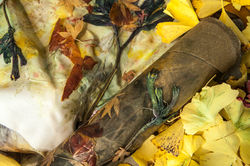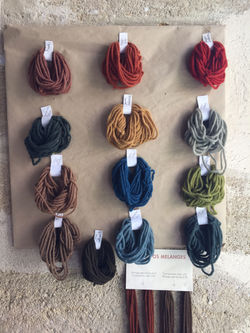
Artisanal textiles and dye workshops
Natural Dyes
DyeHaus is the most wonderful place to experiment with Natural Dyes!
One of my favourite methods is imprinting flowers on silk. It is storytelling on cloth. During travels I collect flowers from significant places and press them and dye with them as a memento.
During this class we will forage for dyestuff as well as using commercial powdered dyes that can be easily obtained.
The aim of the workshop is to provide a grounding in Natural dyeing, components affecting the dye process, additives needed and sources of dye.
Process
Natural Dyes require a mordant to dye effectively, especially cellulose fibres like cotton, hemp, linen and bamboo.
Mordants
are mineral salts that enhance, change and fix dye.
The most common are Alum and Iron. Tannins can also be used for mordanting.
Fabric
Cellulose and protein fibres such as silk and wool can be dyed. They have to be well prepared by scouring, washing very hot with washing soda and detergent.
This will be an active class taking place mostly in the outdoors, surrounded by the beautiful studio garden and 4 resident hens.
We will be collecting walnuts, rosehip, ferns, eucalypt leaves or whatever is in season from around the studio and boil them for dyeing.
Also various types, use and effects of mordants will be examined.
 |  |  |  |  |  |
|---|---|---|---|---|---|
 |  |  |  |  |  |